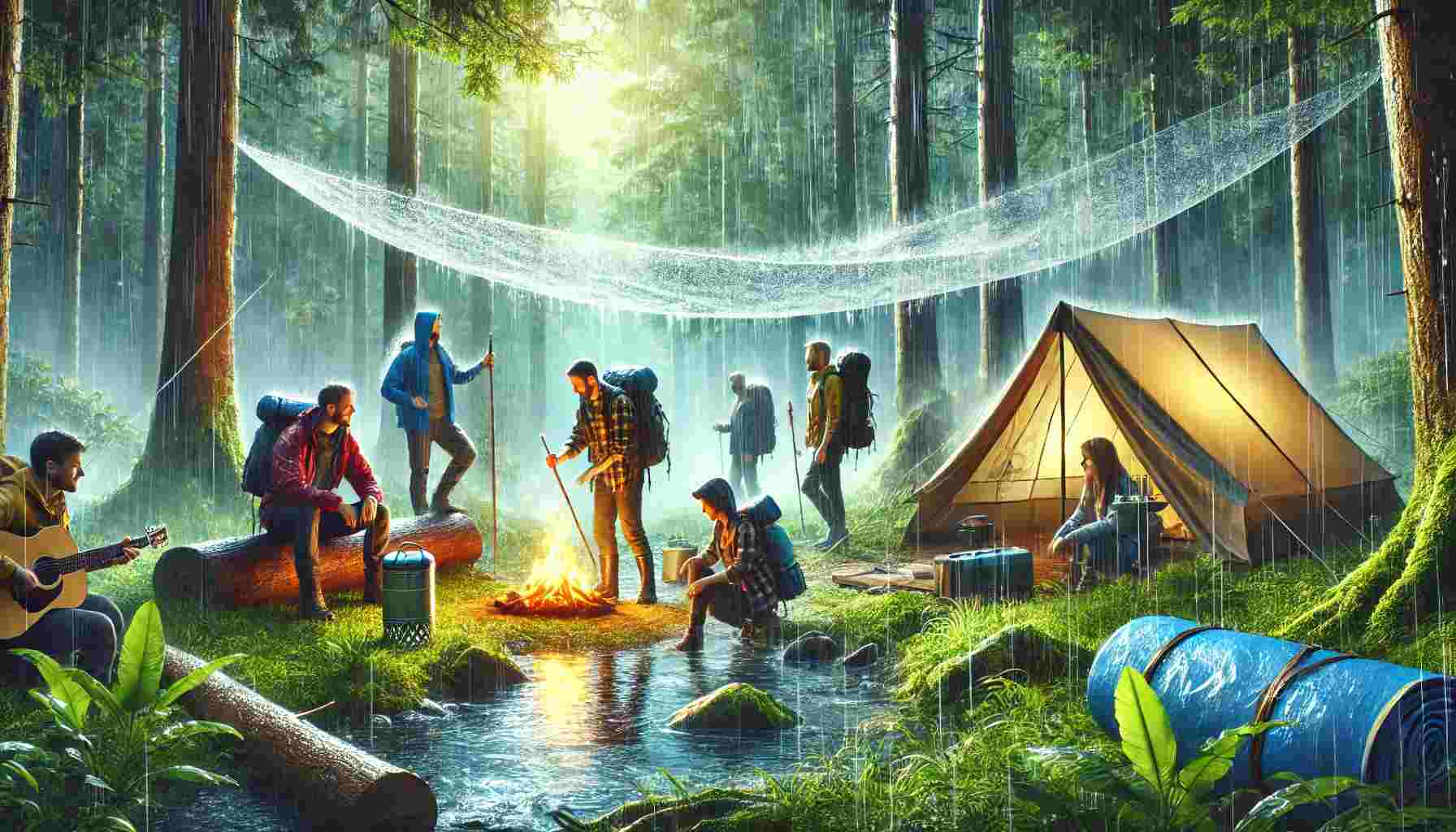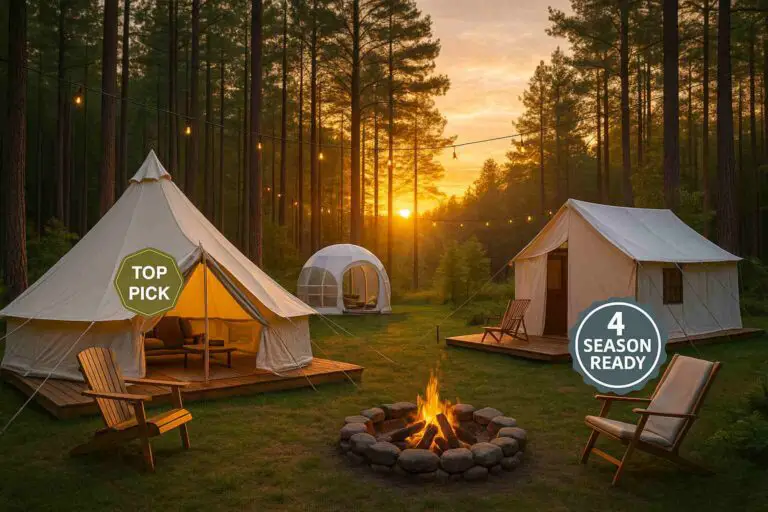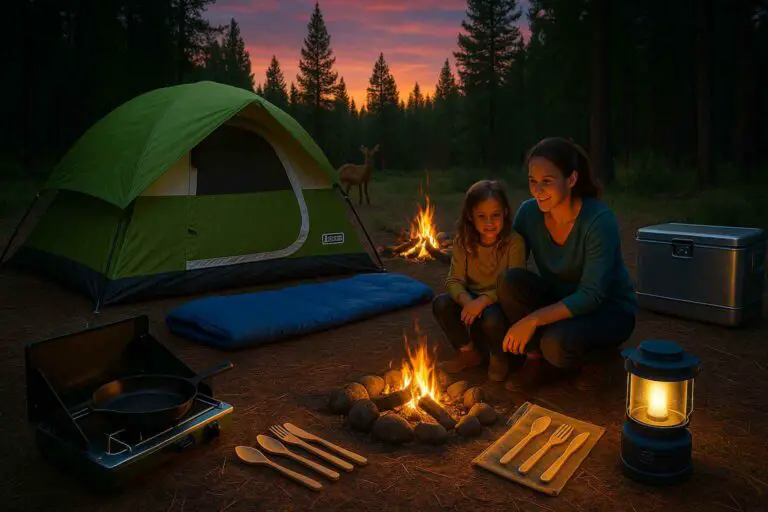Understanding how much rain is too much for camping is crucial for planning a safe and enjoyable trip. This guide will delve into various aspects of camping in the rain, including safety considerations, equipment, and tips for making the most of a rainy camping trip.
Understanding Rainfall and Camping
Measuring Rainfall
Rainfall is typically measured in millimeters (mm) or inches, with meteorological services providing forecasts and real-time data. Light rain is considered less than 2.5 mm (0.1 inches) per hour, moderate rain is 2.5-7.6 mm (0.1-0.3 inches) per hour, and heavy rain is over 7.6 mm (0.3 inches) per hour. Understanding these measurements helps campers anticipate the potential impact on their trip.
Impact of Rain on Camping
Rain affects various aspects of camping, including:
- Ground Conditions: Heavy rain can lead to muddy and slippery ground, making it difficult to pitch tents and navigate the campsite.
- Flood Risk: Persistent heavy rain can cause flash flooding, especially in low-lying areas or near rivers and streams.
- Comfort and Safety: Wet conditions can lead to hypothermia and make it challenging to stay dry and warm.
Safety Considerations
Flash Flooding
Flash flooding is one of the most significant risks when camping in the rain. According to the National Weather Service (NWS), flash floods can occur within minutes or hours of heavy rainfall. Campers should be aware of their campsite’s topography and avoid setting up camp in low-lying areas or dry riverbeds.
Hypothermia
Even in mild temperatures, wet conditions can lead to hypothermia. The Centers for Disease Control and Prevention (CDC) warns that hypothermia can occur at temperatures above 40°F (4°C) if a person becomes chilled from rain and wind. Proper clothing and equipment are essential to prevent hypothermia.
Equipment for Camping in the Rain
Tents
A high-quality, waterproof tent is crucial for camping in the rain. Look for tents with a high hydrostatic head rating (measured in millimeters) to ensure they can withstand heavy rain. A rating of 1,500 mm to 2,000 mm is typically sufficient for moderate rain, while a rating of 3,000 mm or higher is recommended for heavy rain.
Recommended Product: Coleman WeatherMaster 10-Person Outdoor Tent
Tarps and Footprints
Using a tarp or footprint under your tent adds an extra layer of protection against ground moisture. Ensure the tarp is slightly smaller than the tent’s base to prevent water from pooling underneath.
Rain Gear
Investing in high-quality rain gear, including waterproof jackets, pants, and boots, is essential. Look for breathable materials to stay dry and comfortable.
Recommended Product: Frogg Toggs All Sport Rain Suit
Dry Bags
Keep your gear and clothing dry by using dry bags. These waterproof bags are available in various sizes and are ideal for storing electronics, clothing, and food.
Recommended Product: Earth Pak Waterproof Dry Bag
Tips for Camping in the Rain
Choosing the Right Campsite
Select a campsite with natural drainage to avoid water pooling around your tent. Avoid camping at the bottom of slopes or in depressions.
Setting Up Your Tent
Set up your tent on a slight incline with the entrance facing downhill to prevent water from flowing inside. Use guylines to secure the tent and prevent sagging under the weight of the rain.
Managing Wet Gear
Create a designated area for wet gear outside your tent. A tarp or a vestibule can provide additional covered space for storing muddy boots and rain gear.
Staying Warm and Dry
Layer your clothing to stay warm and dry. Start with a moisture-wicking base layer, add an insulating layer, and top it off with a waterproof outer layer. Bring extra clothing in case your primary set gets wet.
Cooking in the Rain
Cooking in the rain can be challenging, but a portable camping stove with a windscreen can make it easier. Set up a tarp or use a large umbrella to create a dry cooking area. Avoid cooking inside your tent due to fire and carbon monoxide hazards.
Making the Most of a Rainy Camping Trip
Embracing the Experience
Rain can offer a unique and serene camping experience. The sound of raindrops on the tent and the fresh smell of rain-soaked earth can be incredibly soothing. Embrace the opportunity to connect with nature in a different way.
Activities for Rainy Days
Rainy days can still be fun with the right activities. Consider bringing waterproof games, books, or a deck of cards. Exploring the surrounding area with rain gear can also be enjoyable, as the landscape takes on a different character in the rain.
Campfire Tips
Starting a campfire in the rain is challenging but not impossible. Use dry kindling stored in a waterproof bag, and consider using fire starters to get the fire going. A tarp or large umbrella can provide some cover while you work on the fire.
Statistics and Studies
Rainfall Statistics
According to the National Oceanic and Atmospheric Administration (NOAA), the average annual rainfall in the U.S. varies significantly, with some regions receiving over 60 inches per year. Understanding local rainfall patterns can help campers better prepare for wet conditions.
Study: Impact of Rain on Outdoor Recreation
A study published in the Journal of Outdoor Recreation and Tourism found that rain significantly impacts outdoor recreation participation. However, the study also noted that prepared and experienced campers are more likely to continue their activities despite adverse weather.
Conclusion
Camping in the rain presents unique challenges, but with proper preparation and a positive attitude, it can be a rewarding experience. Understanding how much rain is too much for camping involves considering safety, equipment, and personal comfort. By following the tips and advice outlined in this guide, campers can ensure a safe and enjoyable trip, even when the weather is less than ideal. Embrace the rain, stay dry, and make lasting memories in the great outdoors.
Additional Resources
- National Weather Service (NWS): Weather Safety Tips
- Centers for Disease Control and Prevention (CDC): Hypothermia Prevention
- American Hiking Society: Tips for Hiking in the Rain
You Might Also Like:
How To Cook When Camping In The Rain?
Unleashing Adventure: Rainy Day Camping Activities For Adults
What To Do When It Rains While Camping? Be Rain-Ready








